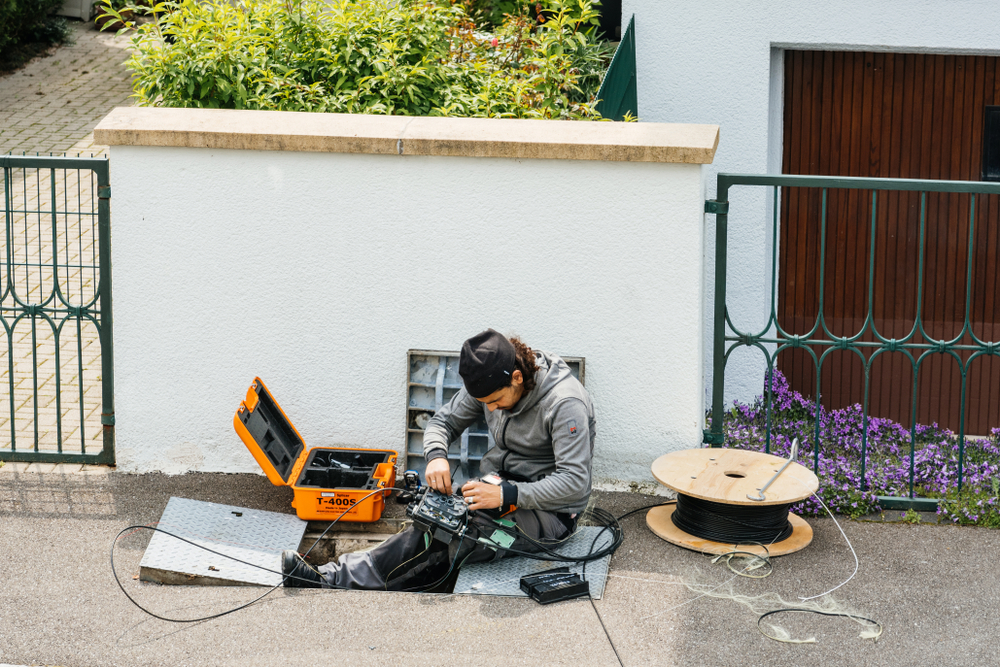In the current world, a kilometer of fiber-optic cable is more valuable than a kilometer of road.
Shailesh Rao, VP, International Operations, Twitter.
Optical Fiber is still the king of internet connectivity
The thirst for data across the world has skyrocketed as most companies embrace the path of digital transformation. By mid-2022, there were 5.03 billion internet users globally, which is around 63.1% of the global population. In this study, approximately 4.7 billion people, or 59% of the population, were social media users. To meet this growing demand, network deployment must be accelerated like never before throughout the world. Among all the connectivity options, fiber broadband still remains the undisputed king of transmission technology, surpassing DSL, cable, and wireless networks.
Consequently, CSPs are investing billions of dollars yearly in fiber rollout for network expansion. The OPEX expenditure is going through the roof due to fiber deployment inefficiencies, especially with the time spent laying optical fibers using conventional methods that involve manual processes. India currently has 35.11% fiberization and must complete the fiber rollout of 35 lakh km by 2025 to power 5G, data centers, and other internet-operated technologies.
Thanks to the latest Fiber Deployment Solutions developed through research and rigorous testing, service providers now have a chance to improve their operational efficiency of fiber deployment. By integrating cutting-edge technologies, most of the fiber rollout tasks can be automated and optimized so that maximum optical fibers are laid out daily to meet global deployment goals.
Contents
Fiber Deployment Pitfalls
CSPs face a host of challenges during large-scale fiber rollout projects. Such projects usually include long distances and complicated processes that need end-to-end process management and frequent communication across multiple channels, from internal management to various vendors. Unwanted project delays and missing to reach milestones within the deadline are major fiber deployment pain points. The multi-layered fiberization projects are complex and are primarily driven by unorganized players with unskilled labor and a lack of proper planning. Consequently, many problems arise, slowing down the fiberization and digital inclusion projects. Some of the obstacles that reduce the fiber deployment speed are:
- Time-consuming field surveys: The accuracy of the initial fiber deployment route relies on the digital data quality collected. However, the final plan requires actual site surveys to capture route information like space availability for cabinet placement along the road or the pole, whether fiber laying has to be done on the right or left corners of the road, whether any buildings are being built on the fiber deployment route design, or are there any significant obstacles like big rocks blocking the deployment route, etc. Traditionally, surveys are done manually, which requires more resources, and can create delays in the fiber rollout process.
- Multiple Approvals: Fiber laying, ducting, and other activities of fiber rollout take a lot of time, effort, and human resources. This includes getting multiple approvals from various authorities like municipal corporations, traffic controller boards, highway authorities, local apartment societies, telephone departments, electricity departments, water and sewage departments, etc. There are also added responsibilities of communicating with the construction firms that dig trenches, build ducts, do fiber laying and pulling, and perform other manual activities.
- Skilled labor shortage: Nowadays, it’s no big secret that the skilled workforce is in big shortage across the world. This is especially true when it comes to the technicians that work on fiber deployment, from laying the cable to last-mile connectivity. In addition, as CSPs expand their territories, new subscribers are being added exponentially, requiring more fiber laying. In turn, more workers are needed to maintain the speed of the fiber rollout. Also, this is a specialist job, and when senior employees retire, the new recruits may require extensive training, leading to further delays in fiber deployment.
Cutting-edge technologies that accelerate fiber rollout by many folds
Using Robotics for Automating Fibre Deployment
The field of robotics is advancing every day, and companies are using robots to deploy aerial fibers using the already available electrical infrastructure. Such a system significantly reduces the cost of fiber deployment. Moreover, such technology can make fiber accessible in terrains where underground duct construction is difficult.
Using Preconfigured Categorized Solutions
Using preconfigured elements may avoid misinterpretation and allow you to deploy fibres more efficiently. You can use pre-connector fibres and pre-installed ducts for maximum efficiency.
Using Unified Deployment Platforms
Closures and terminals have to be compatible with the kind of deployment in order for them to be used. It is advisable to make use of a unified platform that is compatible with a variety of FTTx installations, such as low-density rural, single residential, multi-fiber, and so on. This practice will increase the deployment speed as you eliminate the step of deciding appropriate closures and terminals.
Smarter approaches to cabling
Delays in fiber deployment typically occur in the last mile. This is because traditional laying and splicing takes a long time. Also, splicing is a tricky task and requires a skilled workforce, which is often challenging.
CSPs are shifting to fiber indexing in their fiber-to-home distribution networks to accelerate the fiber installation time and minimize the overall effort. This strategy keeps connectorized fibers and terminals with the same components, daisy-chained in a plug-and-play mode. By configuring the optical fibers and integrated service terminals in this manner, they can be rolled out quickly, easily, and at reduced labor costs.
Conclusion
The future of digital transformation depends on how fast we can perform fiber deployment across the globe so that all the new technologies are powered by high-speed internet. If we manage to overcome the challenges that slow down fiber deployment, we can see the light at the end of the hyperscale internet connectivity tunnel, especially with 5G becoming the heart of the digital revolution 4.0. By integrating the above-discussed technologies, we can not only accelerate fiber rollout many folds but also reduce costs in the long run, enabling CSPs to offer fiber broadband at an affordable tariff for both households and businesses.














